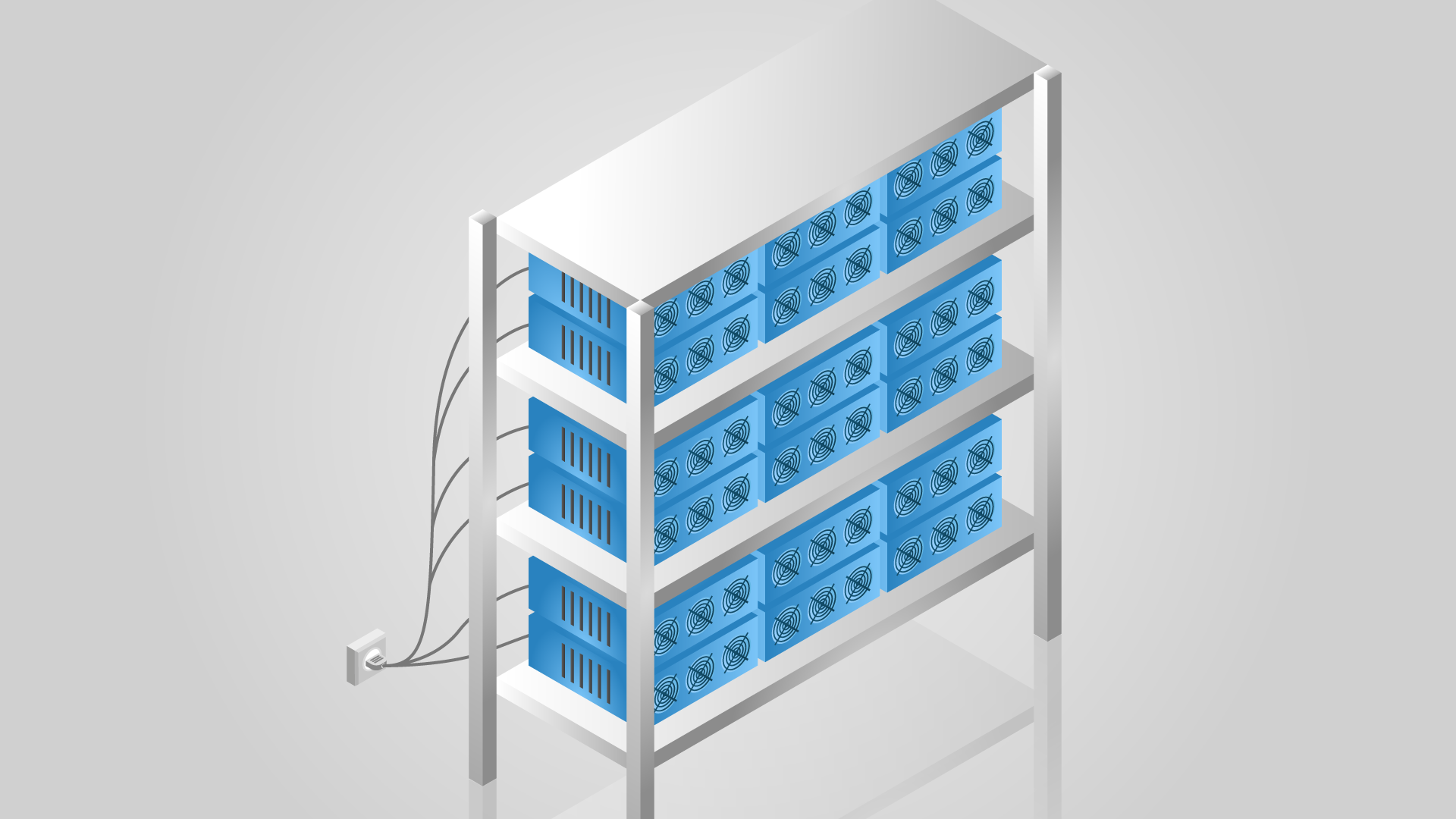written by @emylacapra
The most vocal opponents of Bitcoin regularly tout energy consumption and CO2 emissions as a top argument. While making the headlines of financial and economic newspapers, this spread of “alarming” data commonly lacks one important facet of the story: the origin of Bitcoin energy sources.
“Bitcoin’s contribution to CO2 emissions is too high, it devours more electricity than Switzerland, and it’s disastrous for the climate!!!” Sound familiar?
In exploring this topic, we’ll try to bring clarity to one of Bitcoin’s most fascinating and controversial qualities by investigating the at times contradictory reported data as well as developments that may impact Bitcoin energy consumption in the future.
Reporting on Bitcoin energy consumption is no easy task due to the different methodologies adopted by analysts, the limited data availability, and to the highly variable conditions across the industry (for example which mining hardware is used; electricity costs; cooling needs).
One aspect to keep in mind at all times is the mining consumption vs the mining generation of Bitcoin energy. The reports that produce an unfavorable picture for Bitcoin indicate approximate energy consumption levels but disregard the source and the locations where the power is generated; the others refute such considerations because they’re half-truths with one side of the story is totally neglected.
Four reports have established the pillars of research into Bitcoin energy consumption, the Cambridge Bitcoin Electricity Consumption report, the Joules Carbon Footprint report, the Coinshares Bitcoin Mining report, and the IEA (the US Information Energy Agency) Bitcoin Energy Use report.
The first two are supported by the Bitcoin Energy Consumption Index (BECI), which contrary to the reports admits that “In the long run, we can envision Bitcoin miners to increasingly establish their operations near large sources of renewable energy, which also triggers further development of renewable generation resources at the respective sites”. Still, they compare Bitcoin’s emissions to those of a country like Jordan or Sri Lanka. They call for legislators to crack down on Bitcoin because it is polluting the world.
Coinshares and IEA have a milder approach. While confirming the high consumption of Bitcoin energy, they also mitigate the issue by reporting massive usage of renewables whose impact on CO2 emissions is little or none compared to fossil fuels. Moreover, such resources would get wasted if they were not used in mining.
Bitcoin Impact on CO2 Emissions
At the end of 2018, the revelation by Nature that Bitcoin emissions alone could push global warming above 2°C caused turmoil among the community and across environmental agencies who suddenly saw Bitcoin as one of the biggest threats to climate health.
That report, though, just like the Cambridge and the Joules reports, does not take into account that 74% of Bitcoin energy comes from renewables. What matters is not so much the amount of energy but rather the type of energy source being used to generate electricity, as renewables and fossil fuels are not equivalent from a carbon footprint perspective.
Why Bitcoin Requires So Much Energy
Energy consumption in Bitcoin is an inevitable factor because any non-reversible computation must consume a minimum amount of energy (Landaurer’s principle)
The first miner to solve a block of transactions is rewarded with newly minted bitcoins and network transaction fees. Mining consumes an enormous amount of energy through proof of work. The energy use of the Bitcoin network is an absolute necessity to ensure security.
The energy consumption of the Bitcoin network depends on a few inter-related factors, some of which respond to the changing price of bitcoin:
- IT infrastructure including mining hardware;
- Network hash rate, is the combined rate at which all miners on the network are simultaneously attempting to resolve the puzzle;
- “Difficulty” of solving for a block, which is adjusted in response to the network hash rate to maintain the target of generating one block every 10 minutes;
- Energy consumption by non-IT infrastructure, such as cooling and lighting.
The IT infrastructure for bitcoin and other cryptocurrencies has developed rapidly over the past decade. In ten years it moved from standard central processing units (CPUs) through powerful graphics processing units (GPUs), all the way to industrial-scale operations that implemented application-specific integrated circuits (ASICs).
ASICs are chips built to mine bitcoin. The latest ASICs are both more powerful and more energy efficient, being around 50 million times faster and a million times more energy efficient than the CPUs used in 2009.
More cost and energy-efficient mining hardware will be crucial in the next few years since it absorbs many of the costs incurred by miners. Combined with cheaper electricity, miners will continue in their digital arms race to claim newly issued BTC and transaction fees. This is an essential attribute in the life cycle of Bitcoin.
Let’s Dig Into Energy Consumption
EIA, the US Energy Information Administration, projects a 28% increase in world energy use by 2040. Renewables are expected to be the fastest-growing energy source, with consumption increasing by an average of 2.3% per year between 2015 and 2040.
Evaluations reveal Bitcoin’s annual energy consumption to be between 35 TWh and 61 TWh, depending on the report you read. The EIA itself has estimated that bitcoin mining consumed around 45 TWh in 2018, although, through the first six months of 2019, it had already consumed an estimated 29 TWh.
This is indeed more than many countries (the Czech Republic uses an estimated 62.34 TWh per year while Switzerland consumes 58.46 TWh) and approximately 0.28% of the total global electricity consumption. By comparison, the global aluminum smelting industry uses approximately 900 TWh per year.
It is estimated that between 60 and 80 percent of bitcoin mining revenue goes straight back into paying for electricity. The cheapest countries where to mine bitcoin, according to PowerCompare, are Kuwait, Venezuela, Myanmar, Bahrain, and China unsurprisingly, the cheapest electricity in Kuwait with only a $1.7 cost per KWH, and the most expensive is Solomon Island with $93.5 per KWH. The United States ranges around $12.5 and the UK at $21.7 per KWH.
Where Does Bitcoin Energy Come From?
The majority of the electricity used by bitcoin comes from clean sources, like wind, solar, and hydropower. CoinShares’ report states that the bitcoin network gets 74.1 percent of its electricity from renewables, making it “more renewables-driven than almost every other large-scale industry in the world.”
Bitcoin mining is mainly located in global regions where there are big supplies of renewable electricity available; remote and underpopulated areas of the world that are abundant in natural resources. Regions rich in renewable energy with low demand have often experienced a population exodus due to local industries moving elsewhere.
These under-utilized renewables cannot be easily transported due to lack of proper infrastructure and high costs to do so, hence why they so are attractive for miners who benefit from the cheaper costs as well as producers who would waste the energy if they did not sell it cheap for mining.
Christopher Bendiksen, Head of Research at Coinshares, believes that bitcoin mining is making use of energy resources that would otherwise go to waste and that renewable power mitigates its environmental footprint. “If miners don’t use cheap, renewable power, then they will use fossil fuels in less savory jurisdictions,” he said. “This is not by chance at all. The reason why they’re doing this is that stranded renewables, and particularly underutilized and stranded hydro, is the cheapest large-scale energy that you can find. This is why you see miners flock to regions where high-powered renewables are abundant.”
A Note on Fossil Fuels
In some regions of the globe, stranded energy like natural gas wells has become unprofitable to get to market. Due to regulations, the producers are left with a few undesirable options:
- Vent the gases directly into the atmosphere (terrible for the environment, incurs carbon taxes)
- Flare the gases (also emits more than regular consumption, incurs carbon taxes)
- Get the resources to market at a loss
With Bitcoin, energy producers are given a much more palatable 4th option: Capture the waste energy, convert it on-site into usable energy, and use said energy to mine Bitcoin. Suddenly a net loss can become an attractive profit, all while causing fewer CO2 emissions. Companies like Upstream Data and Great American Mining are already deploying these kinds of solutions today.
Favorable Mining Regions Worldwide
The choice of location for miners depends on a series of key factors, from access to low-cost electricity, fast internet connections, cool climates, and favorable regulatory environments. For these reasons, China, Iceland, the Pacific NorthWest (Washington State, British Columbia, Oregon), Quebec, upstate New York, and Kazakhstan are considered key mining centers.
China accounts for between 50% and 65% of global Bitcoin mining capacity, according to different reports, with Sichuan alone producing 54% of the global hash rate, while the remaining 11% is split more or less evenly between Yunnan, Xinjiang, and Inner Mongolia.
About 80% of Chinese bitcoin mining occurs in the hydro-rich Sichuan province. During the flood season, an exaggerated quantity of rain generates far too much hydroelectricity in the Sichuan and Yunnan provinces where BTC miners take advantage of lower power prices from May to October and buy electricity at under $0.01/kWh.
At 14% share of the world mining capacity, the U.S. seems to be growing rapidly and in recent years, bitcoin mining activities have grown in rural Washington state and all the NorthWest thanks to the massive availability of cheap hydropower, a low-carbon resource and one of the lowest cost forms of energy. 80% of the electricity in the Northwest is produced by hydropower each year, that’s enough electricity to serve as many as 13.6 million homes.
In Texas, bitcoin mining is increasing due to the massive generation of wind power which allows for gaining cheap electricity.
Russia, Kazakhstan, and Iran account for 8% each, Canada 7%, Iceland 2% and the rest of the world 3%. Across these regions, there is a mix of fossil, nuclear, solar, and wind generation sources, with some, such as Iran where natural gas prevails, and others, such as Kazakhstan, Xinjiang, and Inner Mongolia, dominated by coal and combined with small amounts of wind or hydro.
Iceland is favored because it provides immense geothermal power. Its main energy comes from hydroelectric dams and geothermal power plants, creating electricity without carbon emissions.
Kazakhstan is located in an optimal location for mining. The climate is cool, and being close to China it’s becoming a popular location for Chinese to take advantage of cheaper electricity prices outside of the Sichuan Hydro Season.
Usage of Mining Power to Heat Households
Is bitcoin-powered heating ready for wide adoption? In some cases, people actually use the heat coming from computers mining Bitcoin to heat their homes. It’s a rather easy concept. As mining machines produce bitcoin, they generate excess heat which, if easily captured, is worth utilizing in colder climates.
All it takes is a single mining chip to radiate heat up to 10 square meters. A few ASICs can heat a bigger house and earn owners some bitcoin.
Start-ups are already competing globally to catch that slice of the market by producing mining rigs that are also heaters. They’re encouraging households to get one to run their full node mining Bitcoin and replace coal-powered equipment, which could have benefits both for the environment and for cost saving.
Conclusion
The Bitcoin mining industry appears to be heavily renewables-driven. The Coinshares report affirms that “Bitcoin mining is acting as a global electricity buyer of last resort and therefore tends to cluster around comparatively under-utilized renewables infrastructure. This could help turn loss-making renewables projects profitable and could act as a driver of new renewables developments in locations that were previously uneconomical.”
Surely the industry is healthy and hasn’t so far suffered major consequences from the halving event in May this year. Availability of energy and cost-efficient areas for miners are plentiful globally. Given the incentives, local legislators are likely to continue indulging mining industry or risk losing business to competing locales. Given these conditions, the Bitcoin network is quite likely to continue consuming energy at ever-increasing rates.
Just like with the Internet forty years ago, power absorbed by enormous data centers and servers was supposedly going to deprive others of that energy and further fuel climate change. Innovations in energy-efficient equipment, capitalizing on waste energy, and better use of renewables was utilized to minimize the assumed impact. At this point, the idea of “shutting off the internet” in the name of consuming less power would surely seem ludicrous to just about anyone. In time, the sentiment is likely to be shared with Bitcoin as the benefits of a decentralized global sound money become clearer.
Our aim is to create a platform that offers users the most enjoyable trading experience. If you have any feedback, please reach out to us at feedback@btse.com or on Twitter @BTSE_Official.
Note: BTSE Blog contents are intended solely to provide varying insights and perspectives. Unless otherwise noted, they do not represent the views of BTSE and should in no way be treated as investment advice. Markets are volatile, and trading brings rewards and risks. Trade with caution.







